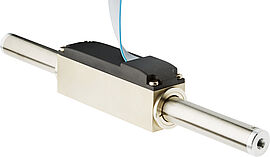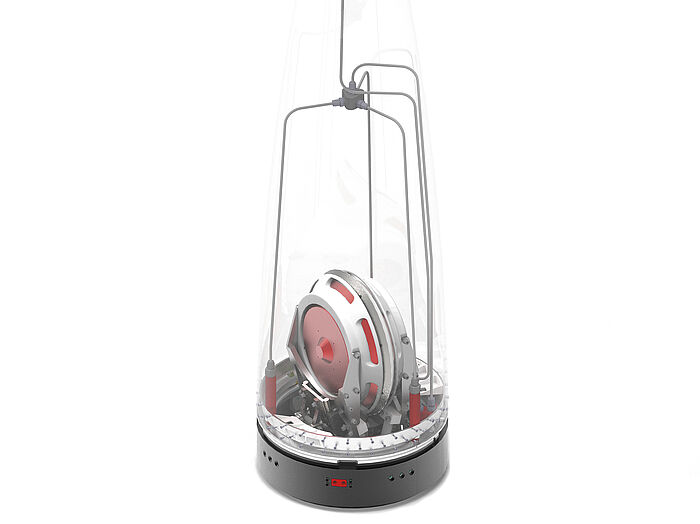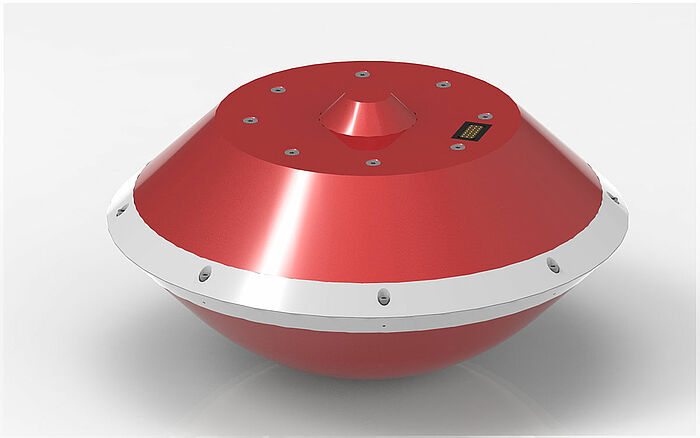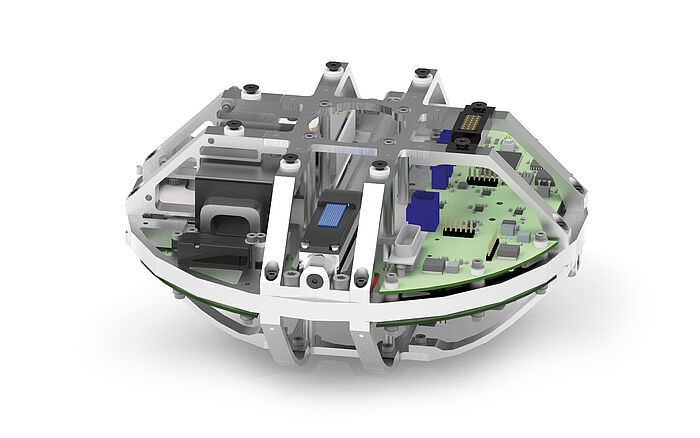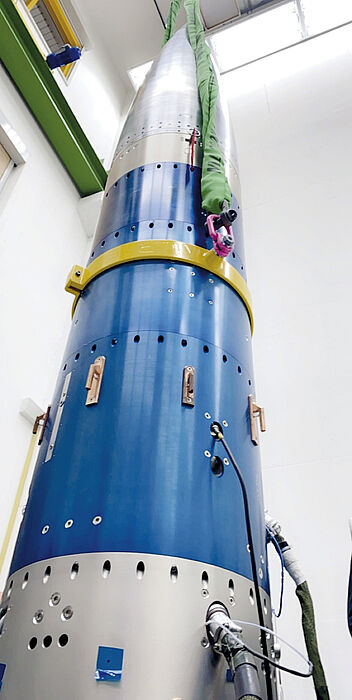In 1969 Neil Armstrong and Buzz Aldrin were the first people to step foot on the moon. Their lunar landing mission was the first space mission during which samples were collected on a celestial body and brought back to Earth. Even today, scientists continue to evaluate and make new discoveries from the material. Manned space travel is, however, too expensive and complicated for collecting cosmic rocks. Since Apollo 11, it has above all been unmanned probes that have collected substances from celestial bodies.
Stardust by the gramme
While the famous astronauts brought back moon rock by the hundredweight, the unmanned missions generally make do with just a few grams of the cosmic material. Thanks to modern analysis methods, even the smallest quantities are sufficient for in-depth research. It helps the scientists to better understand the processes that occurred during the formation of our solar system. Moreover, the amino acid glycine was also detected in such samples. It follows that this protein building block landed on Earth with meteorites and probably contributed to the origin of life on our planet.
Before the samples can be examined, they must, of course, first be returned to Earth. To accomplish this, return capsules are used on the unmanned missions. They are released from the space probe at a precisely calculated moment and sent on their way with a small push. The Earth's gravitational pull eventually forces them to land in what is a precalculated area.
Like all objects that enter the Earth's atmosphere from space, the capsule becomes extremely hot in contact with the atmosphere. To counter this reaction, it is effectively protected by its round-oval shape and a heat shield. An especially critical phase of the return begins a brief time later after it has already been significantly slowed down by the air resistance and moves at "only" subsonic speed.
Danger from aerodynamics
During this part of its flight, the capsule is already exposed to the terrestrial aerodynamics. Every air eddy affects its trajectory and its orientation. Without wings and flaps, there is no way to stabilize from the outside. There is a risk that the capsule could begin to spin. This occurred, for example, with the return capsule of NASA's Genesis Mission in 2004. During this phase of the flight, it lost its intended orientation and it could not release the parachute and crashed unchecked into the ground.
“We want to prevent this scenario by stabilizing the orientation of the capsule during its flight through the atmosphere,” explains Aurélien Walpen from the University of Applied Sciences Western Switzerland (HES-SO), which has campuses in Geneva and Fribourg. He was involved with the HADES project there as a master's student. “One of our professors is very active in the area of space travel and confronted us with the problem of the return capsule. We played through various concepts but soon returned to our initial idea: stabilization though center-of-gravity displacement.” The capsule should, in principle, do the same thing as a surfer when he holds onto his board while riding a wave: He compensates for the effect of his dynamic “ground” by using his bodyweight to constantly adjust his center of gravity. “Translated into the language of mechanics, the compensating movement takes place on the x and y axis. By shifting a weight back and forth on both of these axes, it is possible to compensate for external destabilizing forces.”
Motors with double function
It made sense to use linear DC servo motors inside the capsule to move the two weights. Conveniently, the motor mass is sufficient in this case to function as a counterweight: The stabilizing effect is achieved by the two motors darting back and forth along their axes. Adding additional dead weight is not necessary. While searching for reliable solutions with linear motors for this task, experts from ESA and HADES turned to the solutions offered by FAULHABER. They were able to find a suitable drive in the portfolio based on the physical requirements for the unusual task. These are considerable. First, they must be relatively robust to withstand the enormous forces during rocket launch and upon re-entry into the atmosphere. Especially during the latter, it becomes very hot in the capsule – this after having been exposed to the extremely low temperatures in space and the vacuum present there.
All of this must not prevent the motors from performing their tasks reliably and quickly. They must be able to move back and forth along their axis of motion up to four times per second. To do this, they need a very high torque, as they must be able to work against significant braking and centrifugal forces. At the same time, the space within the capsule – as is always the case in space travel – is a very scarce commodity. The motor must supply maximum performance with the smallest of dimensions.
“We tried various types here as well, only to ultimately return to our first choice,” explains Aurélien Walpen. “The LM 2070-12 linear DC servo motors from FAULHABER achieved the best values in all important points and proved itself to be the most reliable drive. It was also important that the motor control can be very easily programmed and integrated in the complete system.” The entire system was tested in climatic and vacuum chambers as well as in the wind tunnel at the university in Geneva. There, the reaction of the capsule to the air resistance during the flight through the atmosphere was simulated. During the tests, the linear motors reliably stabilized the orientation of the capsule. The field test with actual return from space that was planned for March 2020 had to be postponed. Now it is scheduled to take place in spring 2021. The capsule will be launched by a REXUS rocket from the Esrange Space Centre in the northern Swedish town of Kiruna. After accelerating to 20 G and reaching a top speed of 4,300 kilometers per hour it will travel to an altitude of 100 kilometres above the Earth's surface from where the capsule will be dropped and thanks to FAULHABER it will return safely.
Products
